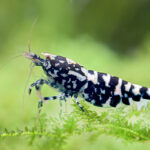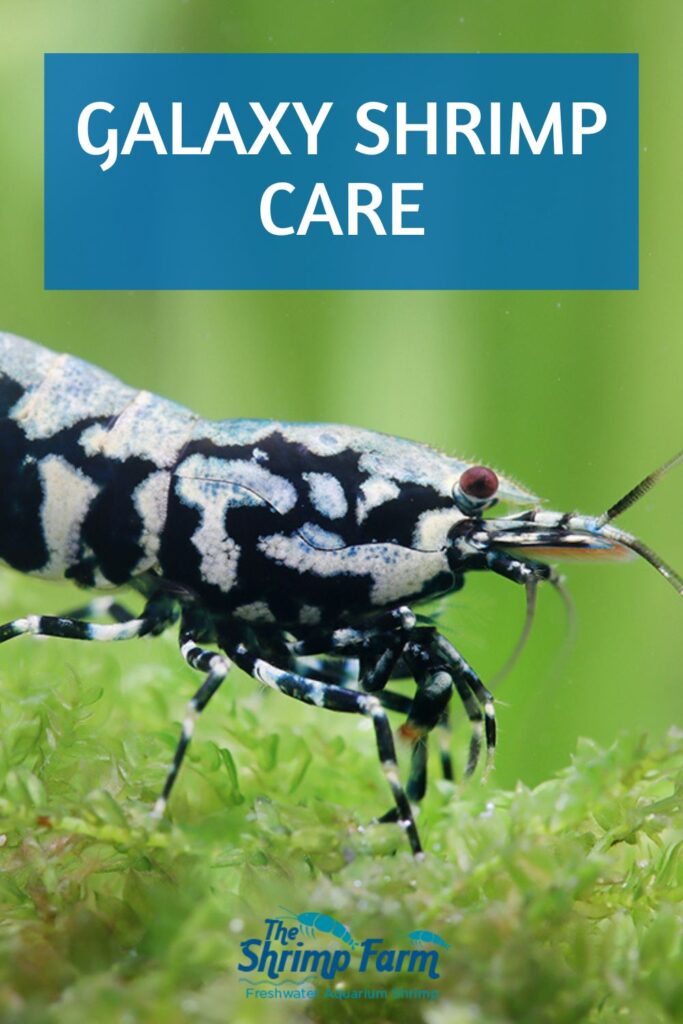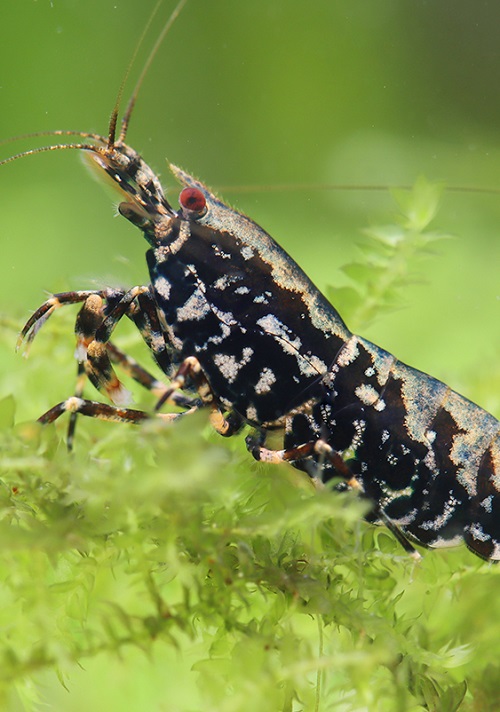Galaxy shrimp | Care, info, diet & more
Looking for a new dwarf shrimp to add to your aquarium and don't want to go for just any boring old species? Have we got one for you today! Meet the galaxy shrimp, a hybrid that has only been around for a few years. They're not cheap, but their looks make them more than worth it for some aquarists.
Keep reading for everything you need to know about galaxy shrimp and how to keep them happy and healthy in your home aquarium.
| Scientific name | Caridina mariae x cantonensis |
| Common names | Galaxy shrimp, galaxy pinto shrimp, black galaxy shrimp, red galaxy shrimp, |
| Difficulty level | Medium-Hard |
| Origin | Hybrid |
Table of Contents
Galaxy shrimp origins, appearance & grading
Origins
Selective breeding with Taiwan bee shrimp (Caridina cantonensis) and tiger shrimp (Caridina mariae) has led to a wide range of beautifully colored and patterned dwarf shrimp. One of these is the galaxy shrimp, which has only been on the market for a few years and is characterized by its white coloration on a colored body. The name was derived from the spots on these shrimps' cheeks, which are reminiscent of little stars.
Galaxies were first bred by Leon Su from Taiwan, who is better known as SKYFISH in the shrimp hobby. A bit of a legend, considering he's produced several other spectacular Caridina cantonensis and pinto strains through selective breeding!
Here's how galaxy shrimp came to be:
- A natural mutation popped up among Crystal Red shrimp and was dubbed Taiwan bee.
- Taiwan bees were crossed with tiger shrimp (Caridina mariae) to produce Tibees.
- Tibees were crossed back to Taiwan bee shrimp to produce TaiTibees.
- Selective breeding was performed to acquire the striking galaxy pattern.
Appearance & grading
Galaxies mostly come in red or black, although we've also seen yellow (golden) specimens. Out of these three, the red version is the most sought-after and therefore the most expensive. This being said, a lot also depends on grade or quality.
These shrimps' grade is determined by their pattern: the more white the shrimp sports, the more you'll have to pay for it. This especially applies to the cheek spots, with specimens with more spots being considered more desirable. An extra bonus is if the patterning shows up as metallic, which makes the shrimp even more valuable.
Note: You may have also spotted shrimp referred to as galaxy fishbones. These are very similar to regular galaxies, but they have been selectively bred for a certain pattern and are therefore more expensive. The stripes on their back are reminiscent of a fishbone, hence the name.
Setting up a galaxy shrimp aquarium
Requirements
If you're looking for your first dwarf shrimp, galaxies aren't the best option. Although breeders have come pretty far with them in terms of stabilizing their lines and making them less fragile, these shrimp are still significantly more demanding than something like a Neocaridina. Try red cherry shrimp or something similar instead if you're just starting out.
We recommend an aquarium of at least 5 gallons for a colony of galaxy shrimp, although since a larger water volume is easier to keep stable, bigger does tend to be better. It's a good idea to go for a dedicated set-up for these shrimp. Use an active substrate to buffer the pH and KH and don't forget to offer some hides.
Water quality
Achieving the right water quality for this shrimp can be a little challenging. However, once you get the hang of it, it allows you to keep all sorts of fancy dwarf shrimp that don't do well in tap water! First off, remember that you should be using re-mineralized reverse osmosis water. These shrimp like soft and acidic conditions with a low KH, meaning you'll have to go for a special re-mineralizer like Salty Shrimp Bee-Shrimp.
The aquarium should always be fully cycled and stable before you introduce your galaxy shrimp. Regular small water changes and cleaning should be performed to keep the water quality high.
Keep an eye on the water temperature, as galaxies don't like temperature swings. Don't let the temperature fall below 68 °F in Winter and don't let it climb to above 77 °F in Summer to prevent issues.
pH: 5.5-6.8
Temperature: 68-77 °F
GH: 3-6
KH: 0-1
Total Dissolved Solids: 80-150
Tankmates
Your options in terms of tankmates for galaxy shrimp are limited. Most aquarists prefer going for a single-species set-up for fancy shrimp like these! We'd definitely recommend against keeping them with any fish, and snails are unfortunately not the best option either. The very soft and acidic water that galaxy shrimp like will slowly dissolve their shells and prevent them from growing properly.
Instead, you can keep your galaxy shrimp with Neocaridinas. Don't combine them with other Caridina species from the serrata complex, like tiger shrimp, as they can interbreed and muddle the gene pool.
Galaxy shrimp diet
Galaxy shrimp can be raised on a regular high-quality shrimp food. Feed a little each day and remove any leftovers within a few hours to prevent them from fouling the water. If you'd like to offer a more permanent food source, you can always throw in some Indian almond leaves.
Many breeders recommend offering your galaxy shrimp a more protein-rich food once or twice a week to stimulate breeding. You could go for something like frozen Artemia for this purpose.
Breeding galaxy shrimp
Although galaxies aren't regarded as the easiest to breed, it's actually not too difficult to get them to reproduce. As long as all the guidelines discussed here are met (and you've got both males and females), your colony should multiply. As with all dwarf shrimp, the females move eggs to their swimmerets after mating. After around four weeks, live baby shrimp will hatch.
The fry can find their own food and don't need any intervention; just be careful not to suck them up as you vacuum the tank floor! Once they're a few weeks old, you can start selecting based on pattern. If you're serious about breeding, it can be handy to maintain a second tank where you keep "culls" that aren't desirable enough to continue breeding with. You can sell these off to other hobbyists or just let them live out their lives.
Frequently asked questions
The easiest way to achieve your own galaxy fishbone shrimp is by buying a colony of TaiTibee shrimp and selectively breeding them for the desired pattern. Alternatively, you can first create your own TaiTibees by crossing Tibees back with Taiwan bees.
As with other dwarf shrimp, galaxy shrimp lifespan is 1-2 years.
Buying galaxy shrimp
Technically, you don't have to buy galaxy shrimp. The higher grades are still very pricey! As mentioned, it is possible to create your own by producing TaiTibees and then refining based on pattern. This would take years, though, so most aquarists opt to just buy. A good option for those on a budget is to purchase low-grade galaxies and then selectively breed them at home for better coloration and pattern.
The Shrimp Farm carries the sought-after galaxy fishbone shrimp in both black and red. This is a galaxy shrimp that features a back stripe.



 Shrimp
Shrimp Fish
Fish Crab &
Crab & Plants
Plants Foods
Foods Snails
Snails

